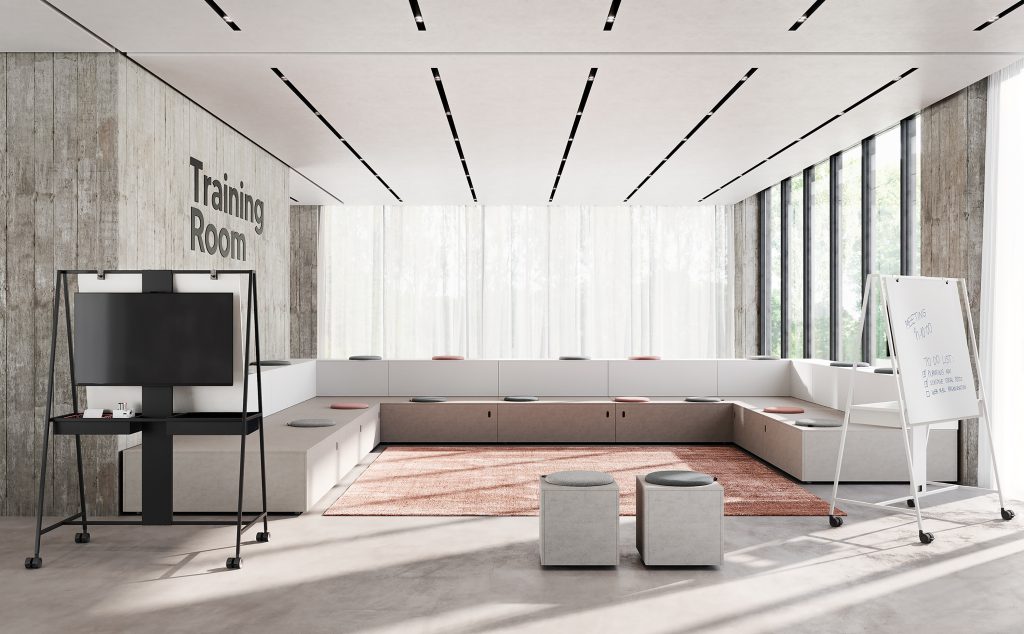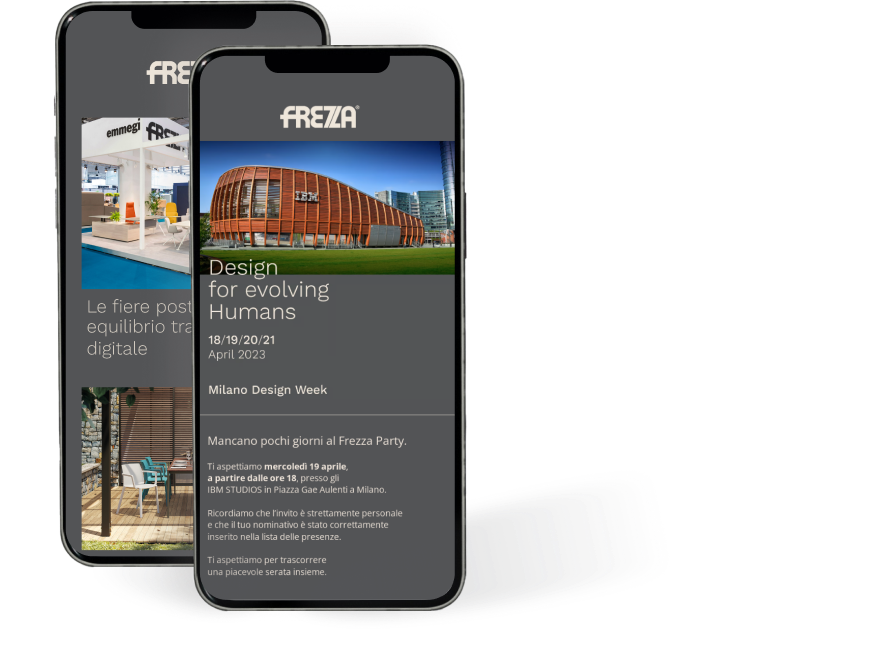In a world that is increasingly aware of how urgent sustainable practices are, circular economy principles are emerging as an effective solution for both interior and exterior architecture. Its application to office design not only represents a green choice, but also an imperative necessity to address environmental challenges and reduce the construction industry’s impact on the ecosystem.
The essence of Circular Economy
Circular economy differs from the traditional linearity based production and consumption model because it promotes reutilization, recycling and the extension of the useful life of materials, instead of generating waste. This is a strategy that can be implemented in all areas, from the everyday household to the design of an entire office: selecting durable products and using them correctly is a key factor to avoid early damage.
Rethinking the design and use of space
The figures speak for themselves and are particularly alarming: construction is the most resource-intensive and waste-creating sector worldwide. According to the World Business Council for Sustainable Development, in 2019 50% of the world’s waste and 40% of its CO2 emissions were attributable to this industry. Surprisingly, however, only a fraction of derelict buildings are converted and renovated, opting in most cases for demolition and total reconstruction.
Change is therefore clearly needed, and adopting a circular economy can make a difference. The European Union’s Waste Framework Directive (WFD) has set the ambitious target of recovering 70 % of construction and demolition waste. The road is, however, still uphill, with recovery rates varying from less than 10% to over 90% in different European countries.
The main obstacles are generally of three types: lack of awareness, high initial costs and resistance to change. This is however a very short-term vision, which fails to take into account the benefits of circular building, which are tangible in the medium to long term and, above all, long-lasting. By reducing waste and use of resources, companies can enjoy considerable financial savings, access multiple incentives and improve their brand perception, as we’ve often pointed out when discussing ESG.

Some useful tips for implementing circular economy in office design
In the previous paragraphs we focused on the construction of buildings, but what actions can be taken when the architectural design only concerns the interior? Here are some practical tips to guide the transformation process towards a more sustainable design:
- Sustainable materials: opt for materials with a low environmental impact, such as FSC-certified wood, ecological paints and recycled fabrics.
- Modular design: furniture, especially in common areas, must be flexible and versatile. Selecting elements that can be moved and rearranged according to the specific needs of the day reduces the risk of having to replace them frequently. This approach is most useful in training and meeting spaces: elements such as Gradone, Mediawalk mobile panel or the Be.1 high tables make reconfiguration very easy.
- Durability and quality: investing in high-quality furniture and materials means reducing the frequency of replacement and thus the consumption of resources (including financial).
- Separate waste collection: there should be recycling bins for paper, plastic and electrical materials in every office, thereby encouraging employees to actively participate in sustainable waste management.
- Sustainable transport: encourage employees to use sustainable means of transport, such as cycling or public transport. This kind of activity doesn’t only contribute to limiting exhaust gas damage, but also promotes a more active lifestyle.
A sustainable future: steps forward
Circular economy in the office is more than just a trend, it’s a necessity. Integrating its principles into design and layout can lead to a more sustainable future, by reducing waste, optimising the use of resources and promoting employee health.

